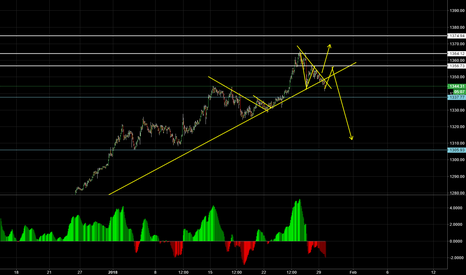The Diverging Views On Japan's Steepening Bond Curve

Table of Contents
What is a Steepening Bond Curve?
Before diving into the complexities of Japan's current situation, let's define the key term. A steepening bond yield curve refers to an increase in the difference between long-term and short-term interest rates on government bonds. In Japan's context, this means that the yields on longer-maturity Japanese Government Bonds (JGBs) are rising faster than those on shorter-maturity JGBs. This often signals expectations of future interest rate hikes and economic growth, but in Japan's case, the situation is more nuanced and subject to diverse interpretations. The implications for the Japanese economy are significant, impacting everything from borrowing costs for businesses to the attractiveness of JGBs to foreign investors.
The Bank of Japan's (BOJ) Policy Shift and its Impact
The Bank of Japan's recent policy adjustments have been a central driver of the steepening JGB yield curve. For years, the BOJ employed Quantitative and Qualitative Monetary Easing (QQE) and yield curve control (YCC) to keep long-term interest rates artificially low. This aimed to stimulate the economy and combat deflation. However, the BOJ has gradually begun to shift away from YCC, leading to increased volatility in the JGB market.
- Gradual Exit from YCC: The BOJ's adjustments, while subtle, represent a significant departure from its ultra-loose monetary policy. This shift has allowed long-term JGB yields to rise more freely.
- Market Reactions to Policy Changes: The market has reacted with a mix of surprise and uncertainty. Some interpreted the moves as a sign of confidence in the economy's recovery, while others viewed it as a premature tightening of monetary policy.
- Potential Consequences of the BOJ's Actions: The BOJ's actions could lead to higher borrowing costs for Japanese companies, potentially slowing economic growth. Conversely, it could also attract more foreign investment seeking higher yields. The overall impact remains debated.
Inflationary Pressures and their Contribution
Rising inflation in Japan has also played a crucial role in pushing up JGB yields. While historically Japan struggled with deflation, recent increases in the consumer price index (CPI) have raised inflation expectations.
- Examination of Current Inflation Rates in Japan: Inflation in Japan, although still relatively low compared to other developed nations, is steadily increasing.
- Discussion on Whether Inflation is Transitory or Persistent: Economists are divided on whether this inflation is transitory or a more persistent trend. This uncertainty contributes to market volatility.
- Impact of Global Inflation on Japanese Bond Yields: Global inflationary pressures, fueled by factors such as supply chain disruptions and the war in Ukraine, have added to the upward pressure on Japanese bond yields.
Global Economic Factors and their Influence
The impact of global economic factors on Japan's bond market cannot be overlooked. The US Federal Reserve (Fed)'s aggressive interest rate hikes, for instance, have strengthened the US dollar against the yen, making JGBs less attractive to foreign investors.
- Impact of US Monetary Policy on Japanese Bond Yields: Higher US interest rates draw investment away from Japan, putting downward pressure on the yen and upward pressure on JGB yields.
- Effect of Global Economic Slowdown on JGB Demand: Concerns about a global economic slowdown could reduce demand for JGBs, as investors seek safer havens.
- Analysis of the Role of Flight-to-Safety During Times of Uncertainty: During periods of geopolitical uncertainty, the yen and JGBs are often viewed as safe-haven assets. However, the recent trends suggest this "flight-to-safety" effect is being diminished.
Diverging Expert Opinions and Market Forecasts
Economists and analysts hold differing views on the future trajectory of the JGB yield curve.
- Summary of Bullish and Bearish Predictions for JGB Yields: Some predict further increases in JGB yields, anticipating continued BOJ policy adjustments and persistent inflation. Others remain bearish, pointing to the potential for economic slowdown and renewed demand for safe-haven assets.
- Discussion of Different Investment Strategies Based on These Predictions: Investment strategies range from shorting JGBs to accumulating long-term positions, depending on the investor's outlook.
- Analysis of the Potential Risks and Rewards Associated with Each Outlook: Each prediction carries substantial risk. Overestimating inflation could lead to significant losses for those betting on rising yields. Underestimating it could leave investors missing out on potential gains.
Navigating the Uncertainties of Japan's Bond Market
In conclusion, the steepening of Japan's bond yield curve is a complex phenomenon driven by a confluence of factors, including the BOJ's policy shift, inflationary pressures, and global economic conditions. The diverging expert opinions highlight the significant uncertainties surrounding the future trajectory of JGB yields. Understanding the interplay between these factors is crucial for navigating the evolving situation in Japan's bond market. To make informed investment decisions related to Japanese Government Bonds (JGBs) and the Japanese bond market, it is vital to stay informed about the latest developments and conduct thorough research. Consider consulting reputable financial news sources and economic forecasts for up-to-date analysis.

Featured Posts
-
 Rare Earth Minerals And The Threat Of A New Cold War
May 17, 2025
Rare Earth Minerals And The Threat Of A New Cold War
May 17, 2025 -
 Analyzing Red Carpet Rule Violations Insights From Cnn
May 17, 2025
Analyzing Red Carpet Rule Violations Insights From Cnn
May 17, 2025 -
 Gold Price Surge Xauusd Recovers On Weakening Us Economic Indicators
May 17, 2025
Gold Price Surge Xauusd Recovers On Weakening Us Economic Indicators
May 17, 2025 -
 New Reebok Ss 25 Collection Featuring Angel Reese
May 17, 2025
New Reebok Ss 25 Collection Featuring Angel Reese
May 17, 2025 -
 Tom Cruise And Tom Hanks 1 Debt A Hollywood Oddity
May 17, 2025
Tom Cruise And Tom Hanks 1 Debt A Hollywood Oddity
May 17, 2025
Latest Posts
-
 Missed Call In Knicks Pistons Game Officials Statement
May 17, 2025
Missed Call In Knicks Pistons Game Officials Statement
May 17, 2025 -
 Knicks Pistons Game Officials Confirm Missed Call In Final Seconds
May 17, 2025
Knicks Pistons Game Officials Confirm Missed Call In Final Seconds
May 17, 2025 -
 Controversial Foul Call Missed By Nba Refs In Knicks Pistons Game
May 17, 2025
Controversial Foul Call Missed By Nba Refs In Knicks Pistons Game
May 17, 2025 -
 Knicks Win Over Pistons Nba Referees Admit To Crucial Missed Foul Call
May 17, 2025
Knicks Win Over Pistons Nba Referees Admit To Crucial Missed Foul Call
May 17, 2025 -
 Aews Josh Alexander Exclusive Interview On Don Callis And Future Plans 97 1 Double Q
May 17, 2025
Aews Josh Alexander Exclusive Interview On Don Callis And Future Plans 97 1 Double Q
May 17, 2025
